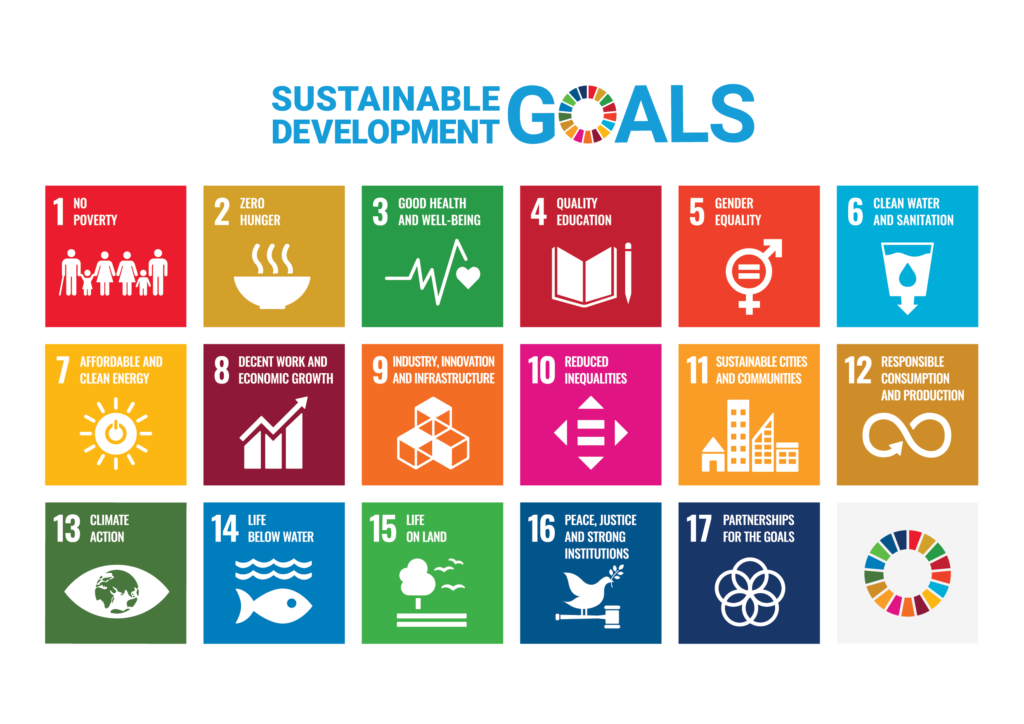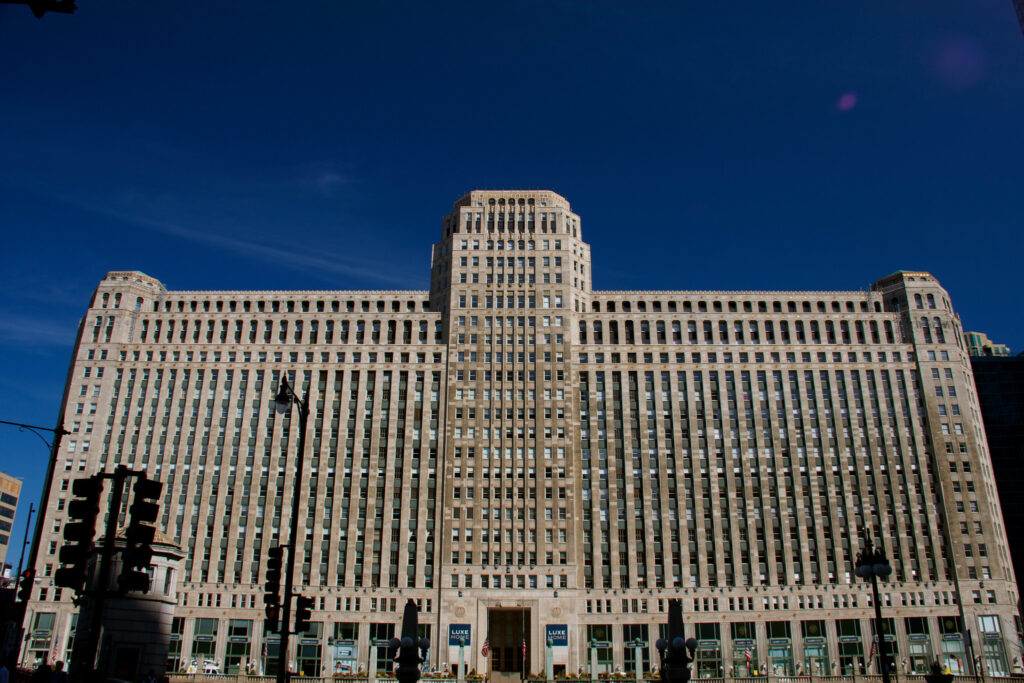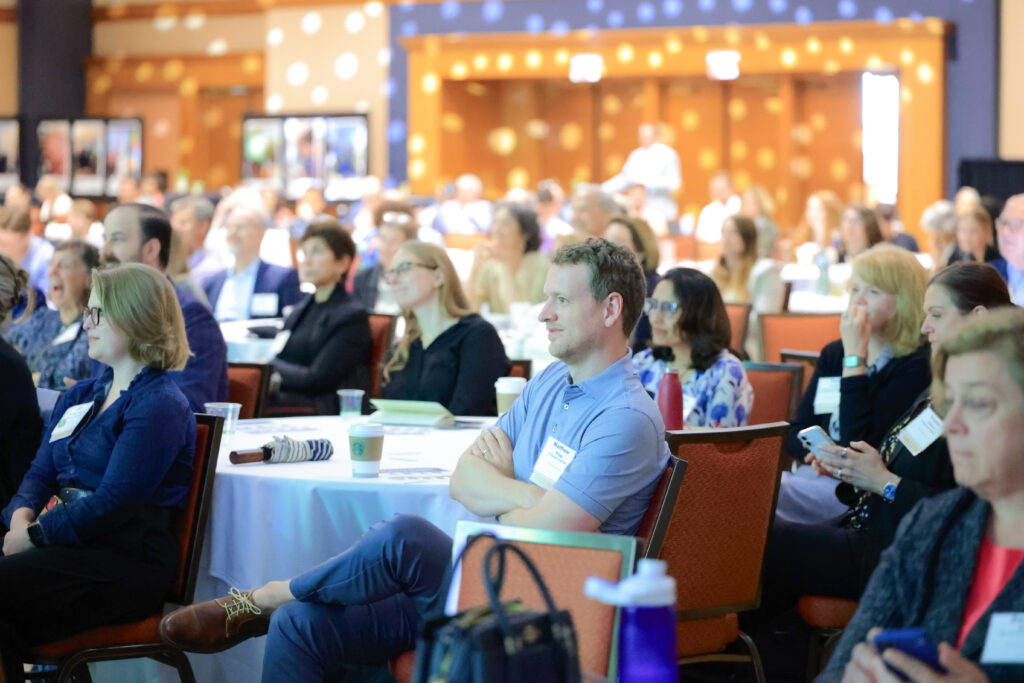“Peace and prosperity for people and the planet, now and into the future.”
This is the goal of the United Nations Sustainable Development Goals (SDGs). This urgent call to action brings together all countries in a global partnership to holistically create a better world for all.
While this may seem like a lofty goal, there are ways your organization and even you as an individual can contribute to the achievement of these goals.
What are the Sustainable Development Goals?
The SDGs as we know them today were adopted by all United Nations Member States in 2015. The Sustainable Development Goals provide a blueprint for all countries to work together to end poverty while improving health and education, reducing inequality, and spurring economic growth – while tackling climate change and working to preserve our oceans and forests.

There are 17 major goals to be achieved by 2030, each with their own targets and frameworks. While many of these require large system-wide changes, individuals can take it upon themselves to bring these goals back and make meaningful changes in their own lives and organizations.
Consider each of these SDGs and what you can do to push these goals forward in both a personal and professional capacity.
1. No Poverty
The first SDG aims to end extreme poverty in all its forms everywhere. This is a perfect example of just how serious the SDGs targets are. Here are some simple ways to support this goal:
- Support government initiatives and political candidates that enforce a living minimum wage along with social safety nets.
- Avoid businesses that exploit workers through low wages, especially in underdeveloped nations.
Developing countries are using circular economy principles to turn waste into economic opportunity, like here in Agbogbloshie, a commercial district in Accra, Ghana, where around 10,000 of the poorest people in the country sort through much of the world’s electronic waste.
2. Zero Hunger
To end hunger, achieve food security and improved nutrition and promote sustainable agriculture is the next goal. The targets here involve ending malnutrition in vulnerable populations, increasing the productivity and incomes of small-scale producers, and ensuring sustainable food production systems and agricultural practices. Here’s how you can support this goal:
- Partner with local organizations that focus on food rescue and reclamation. Any time you have an event catered or expect there to be large amounts of leftover food, donate it to groups that can quickly get it to those in need.
- Ensure that the food purchasing decisions being made focus on sustainable and local options.
The Plant in Chicago gives us a peek into one way a circular economy can tackle food waste with hyperlocal connection of food production businesses.
3. Good Health and Well-Being
The third goal aims to ensure healthy lives and promote well-being for all at all ages. The COVID-19 pandemic has shown how fragile many of the world’s health systems can be and is exacerbating other types of health-related issues as well. To support this goal:
- Encourage regular physical and mental health screenings within the members of your organization.
- Educate on the spread of communicable diseases and what individuals can do to help stop the transmission of diseases
An often overlooked side of our current linear economy is the unintended adverse health effects from hazardous materials. While SDG 3 has a weaker link to circular economy than the others listed here, e-waste is a great example of a fast growing waste stream that needs circular design thinking in a bad way. Closing material loops for electronics presents an opportunity to prevent harmful effects to the environment and human health from the current practice of low standard recycling (shredding) or incineration.
4. Quality Education
The next goal is to ensure inclusive and equitable quality education and promote lifelong learning opportunities for all. It aims to ensure access to education and the resources to learn without worry. Here’s what you can do:
- Have your company partner with organizations that provide specialized education or job training in your industry. A popular example of this is Girls Who Code. but many of these types of organizations exist – often in our own communities.
- Develop or contribute to scholarship foundations to help students cover the often-high costs of achieving a quality education.
- Host or lead continuing education sessions for your employees or community members to learn information or a new skill.
Many educational institutions, like MIT are adopting circular principles of exchange and management to help reduce waste in education and get resources to the students that need them most.
5. Gender Equality
Goal five aims to achieve gender equality and empower all women and girls across the globe. Women tend to be the center of households and communities.
- Advocate for equal wages at the workplace and do not stay silent when listening to comments that belittle women and other marginalized gender groups.
Gender equality helps girls and women become more receptive to circular behaviors such as reuse and repair. Women are often the drivers of responsible consumption and production behaviors through role modeling.
6. Clean Water and Sanitation
The sixth sustainable development goal is to ensure availability and sustainable management of water and sanitation for all. Many communities, even in developed nations like the United States still lack access to clean water. Here’s how you can support this goal:
- Utilize reusable water containers (like those from Fill it Forward) whenever possible. Many single-use water bottle brands exploit the (often minority) communities they pump water from.
- If possible, vote for down ballot water reclamation and sanitation candidates that support sustainable water initiatives.
7. Affordable and Clean Energy
Goal seven is to ensure access to affordable, reliable, sustainable and modern energy for all. It’s no exaggeration that much of the world is dependent on fossil fuel sources that are detrimental to the environment. Some small but meaningful ways you can support this goal are:
- Weaning yourself off fossil fuels if possible. Small but meaningful actions like taking public transport, switching over to “green power”, or eating foods that use less energy to produce.
- Volunteer or donate to organizations that help remove the influence of fossil fuel lobbyists on politicians.
Circularity is the key to clean and affordable energy. Many major cities utilize waste as an energy source rather than sending it to landfills. These systems are called waste-to-energy plants.
8. Decent Work and Economic Growth
The eighth goal is to promote sustained, inclusive and sustainable economic growth, full and productive employment and decent work for all. The COVID-19 pandemic has halted economic growth globally and especially decimated economies that are reliant on tourism.
- Purchase from and promote businesses that are fair-trade certified.
- Avoid brands that utilize sweatshop labor and provide anything below a living wage to their employees.
The nation of France has adopted an anti-waste law that also focuses on building a comprehensive strategy to create economic growth at the national level.
9. Industry, Innovation and Infrastructure
Goal nine is to build resilient infrastructure, promote inclusive and sustainable industrialization and foster innovation. Ensuring the world’s population has access to technology that makes it easier to create a better world for everyone.
- Supporting nonprofits like EveryoneOn connects low-income families to the internet and computer capabilities.
- Upgrade infrastructure around your home to be more energy friendly and sustainable.
- Connect business and nonprofits with available resources, building a hyper-localized and connected circular city.
10. Reduced Inequalities
The tenth goal is to reduce inequalities within and among countries. The COVID-19 pandemic has shown that the most vulnerable groups in our communities are being hit hardest by the effects of inequality. This goal aims to achieve equality fiscally, socially, and politically for all people.
- Educate yourself about the inequalities within your own country and industry and determine how you can help get rid of them.
11. Sustainable Cities and Communities
Humans are social beings, often choosing to reside in cities and communities. This goal aims to create cities and settlements that are inclusive, safe, resilient, and sustainable.
- Start a community garden where members can cooperate to produce local food resources.
- Shop for clothes or furniture in local reuse networks like Craigslist or Facebook Marketplace.
Circular Cities initiatives are taking off across the country. See how Rheaply helped partnered to implement a PPE Marketplace in Chicago during the COVID-19 pandemic.
12. Responsible Consumption and Production
The twelfth goal sets out to create a global behavior of responsible, sustainable consumption and production patterns. It’s increasingly important to use natural resources sustainably, and recover resources whenever possible.
- Track your consumption patterns for water and electricity to determine where you may be able to responsibly change your behavior.
- Build connection points in the circular economy to increase the likelihood of re-circulation and double purchasing
13. Climate Action
Goal thirteen is to take urgent action to combat climate change and its impacts. Perhaps the most pressing issue facing human civilization today, climate change is a growing problem that needs major changes in human behavior to correct, in order to slow the warming of the planet and rapid destruction of natural environments.
- Understand the effects of climate change on our civilization and take individual methods to curb its effects as well as pressure legislators to put policy in place to reduce humanity’s effect on the climate.
62% of global greenhouse gas emissions (excluding those from land use and forestry) are released within the linear economic model – the extraction, processing and manufacturing of goods to serve society’s needs; only 38% are emitted in the delivery and use of products and services. A scaled circular economy would allow us to meet the IPCC target of 50-70% reduction in CO2 by 2050.
14. Life Below Water
The fourteenth goal is to conserve and sustainably use the oceans, seas and marine resources for development. Protecting the oceans and the vast amount of resources they contain is instrumental in the success of humanity.
- Source your seafood and ocean products from sustainable fisheries and ocean operations.
- If you live near a water source, get a group together for a clean-up operation to remove pollution and trash.
15. Life on Land
Goal fifteen is to protect, restore and promote sustainable use of terrestrial ecosystems, sustainably manage forests, combat desertification, and halt and reverse land degradation and halt biodiversity loss. The biosphere is extremely necessary to preserve and build back.
- Plant a native tree species or other native flora to your area to help restore biodiversity.
- Go on a trash pick up in your community and clean up natural areas where possible.
16. Peace, Justice and Strong Institutions
The sixteenth goal is to promote peaceful and inclusive societies for sustainable development, provide access to justice for all and build effective, accountable and inclusive institutions at all levels. Institutions which people can put their faith in, that work for the betterment of all will help achieve further sustainable development across the globe.
- Attend a bystander training to see how you can help when witnessing situations of injustice.
17. Partnerships for the Goals
Goal seventeen, the final goal, is to strengthen the means of implementation and revitalize the global partnership for sustainable development. Partnerships between governments, corporations, and institutions is the only way to achieve the larger picture of a better world.
- Encourage the organizations you are a part of to take action for the advancement of the Sustainable Development Goals.
- Lobby your city or community to begin developing initiatives to tackle the SDG’s.
Major cooperative efforts like the Paris Climate Accord help advance these goals and bring nations together to help save our planet.
It’s time to take action
The goal to reach the Sustainable Development Goals by 2030 is approaching very quickly. Only through total education and action can we all work together to achieve these and bring meaningful change to our world for the better.


